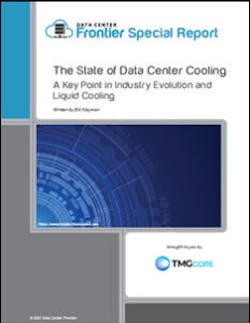Data center cooling is rapidly evolving as the adoption of liquid cooling allows the industry to redefine density and support next-generation computing capabilities. As data volume and computing power increases, data centers need to optimize their cooling solutions to keep up with customer demands. Today’s liquid cooling is more efficient and it allows for higher rack densities, both of which make these systems more cost effective than air-cooling. These are just two one of the primary factors driving the adoption of liquid cooling systems.
In this special report, we’ll look at the state of data center cooling and how liquid cooling technologies are impacting data center design. The report explores how the technology has changed since its introduction in the 1970s and the key trends that are driving the industry’s growth today. It examines how liquid cooling can address the demands data centers face when supporting new types of workloads and helping customers to meet their efficiency and sustainability goals. The report also explores the new designs and standards that are required to meet today’s demand for high densities, specific heat capacities, and thermal conductives.
The report, brought to you in conjunction with TMGcore, includes use cases and guidance for getting started on a liquid cooling journey.
